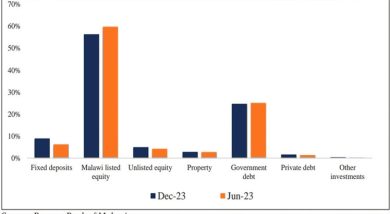Cervical cancer and HIV
Cervical cancer is a type of cancer that develops in a woman’s cervix. The cervix is the entrance to the womb from the vagina. It is the most common cancer among women living with HIV. The likelihood that a woman living with HIV will develop invasive cervical cancer is up to six times higher than for a woman who is not living with HIV. Left untreated cervical cancer can spread to other parts of the body and cause serious complications and death.
Cervical cancer is caused by sexually acquired infection with certain types of HPV. It takes 15 to 20 years for cervical cancer to develop in women with normal immune systems. It can take only 5 to 10 years in women with weakened immune systems, such as those with untreated HIV infection.
Comprehensive cervical cancer control includes primary prevention (vaccination against HPV), secondary prevention (screening and treatment of pre-cancerous lesions), tertiary prevention (diagnosis and treatment of invasive cervical cancer) and palliative care.
Cervical cancer is preventable and curable if diagnosed and treated early. Effective methods of primary prevention of cervical cancer, notably the HPV vaccine, are available, but not to everyone.
Despite their increased risk of cervical cancer, women living with HIV do not receive regular screening or treatment for cervical cancer, even with the World Health Organisation (WHO) recommended simple, low-cost visual inspection or effective simple, early treatment methods.
The WHO has launched the Global Strategy to Accelerate the Elimination of Cervical Cancer, along with this recent launch has been the release of the first estimates of the contribution of HIV to the global cervical cancer burden.
Worldwide, an estimated 5 percent of all cervical cancer cases are attributable to HIV. However, these statistics vary enormously by world regions. In areas with high HIV prevalence, the fraction of cervical cancer attributable to HIV is high. This contributes to the stark disparities in cervical cancer burden. Eighty-five percent of women with cervical cancer and HIV live in sub-Saharan Africa, underscoring the major contribution of HIV to the cervical cancer burden in the region.
WHO has set a cervical cancer elimination target of 90 percent HPV vaccination coverage, 70 percent screening coverage, and 90 percent access to treatment for cervical pre-cancer and cancer, including access to palliative care by 2030. Achieving these targets could reduce more than 40 percent of new cervical cancer cases and 5 million related deaths by 2050.
Bringing together a public health approach with comprehensive, woman-centred care can help girls and women living with HIV and at risk of HPV infection, live long, healthy lives. We all can play part by encouraging our female friends and relatives to get the vaccine and go for screening.




